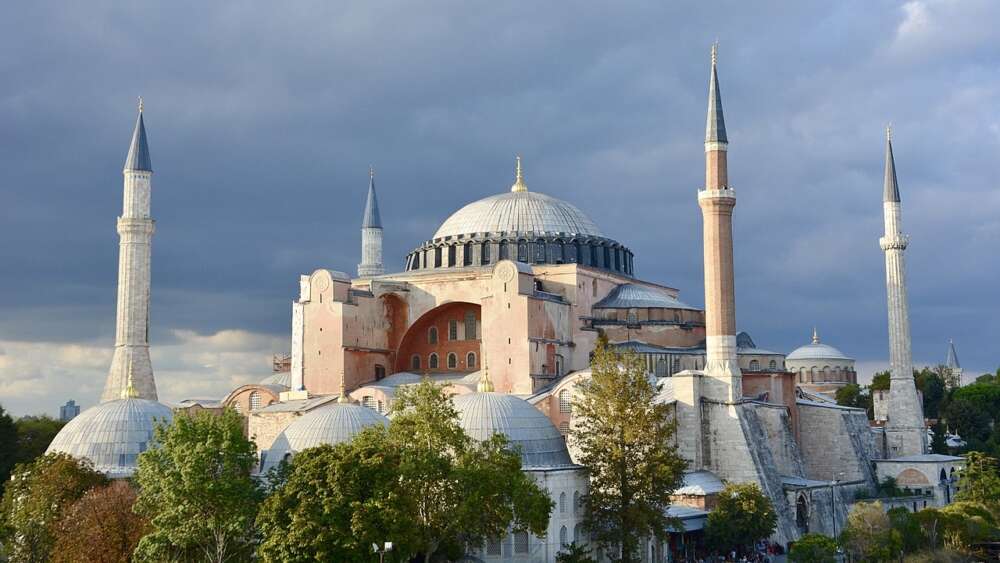Catholic and Eastern Orthodox churches around the world will toll their bells and express prayers of mourning this Friday when Hagia Sophia – a sixth century cathedral in Istanbul that became a 15th century mosque before being a 20th century museum – becomes a mosque again.
The decision to convert the historic building back into a mosque was made on July 10 by decree from Turkish president Recep Tayyip Erdoğan. This followed a Turkish court ruling that it had been unlawful to convert Hagia Sophia from a mosque to a museum in 1934.
“This is as much a religious statement as it is a geopolitical statement.” – Elizabeth Prodromou
Since then, outcry and lament have been voiced by Christians across the globe, including Pope Francis. Eastern Orthodox and Catholic churches have declared the mosque’s inauguration day this Friday as a “Day of Mourning”.
“For the Orthodox Christian, there is only one Great Church of Christ. There would be many other ‘Hagia Sophias’ built around the world … but none dared to imitate the original. She was to stand alone, at the centre of the circle of the Orthodox World for all to relate to as do the spokes on a wheel,” the Eparchial Synod of the Greek Orthodox Archdiocese of America said in an encyclical.
The outcry has been not only from Christians, but also Muslim leaders and secular world leaders – including Russian President Vladamir Putin, former US Vice President and Presidential Candidate Joe Biden, and Greek President Katerina Sakellaropoulou who said:
“… [this] decision that deeply hurts not only Hellenism, but also those who believe that this top symbol of Christianity belongs to humanity and the world’s cultural heritage, and that distances Turkey from the values of the secular state and the principles of tolerance and pluralism.”
Academics and political commenters have also criticised the decision, pointing to its historical significance.
Built in 537 under the Byzantine Emperor Justinian I, Hagia Sophia was the official cathedral of the Patriarch of Constantinople [renamed ‘Istanbul’ in 1930]. But when Constantinople was taken by the Ottoman Empire in 1453, it was converted into a mosque.
Mosaics depicting Christian imagery were painted over and covered. Islamic depictions of Mohammad and Allah were added.
In 1934, under a secularist Turkish government, Hagia Sophia was converted into a museum and various Christian depictions were uncovered, making it a rare building because it contains both Christian and Islamic depictions. In 1985, it was declared a World Heritage Site under UNESCO, the United Nations Educational, Scientific and Cultural Organisation.
“This is as much a religious statement as it is a geopolitical statement, and I think it needs to be read as such,” said Dr. Elizabeth Prodromou, director of the Initiative on Religion, Law and Diplomacy at the Fletcher School of Law and Diplomacy at Tufts University, Massachusetts, USA.
Prodromou said Hagia Sophia’s inauguration date of July 24 was “rife with symbolism” as the anniversary of the Treaty of Lausanne, signed in 1923 after the defeat of the Ottoman Empire in World War I. The treaty established the borders of the modern Turkish state and included explicit protections for Christian minorities there.
“He [Erdogan] has stated indirectly—and increasingly, directly—that he sees Lausanne as something that should be abrogated,” Prodromou told Catholic News Agency. It’s also a signal to Turkey’s NATO allies and fellow countries that it “is not interested in continuing within the context of treaties that are meant to provide stability and order in the region”.
Email This Story
Why not send this to a friend?




